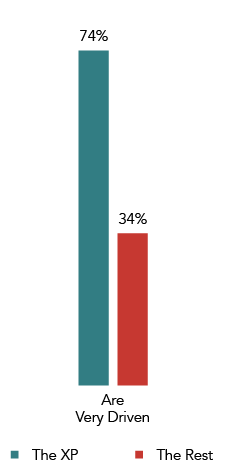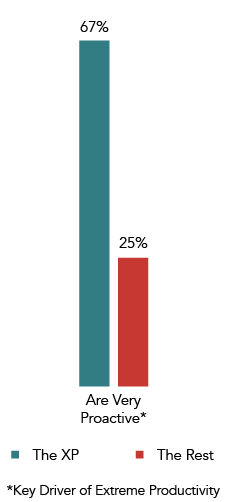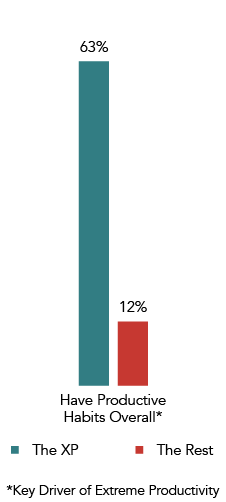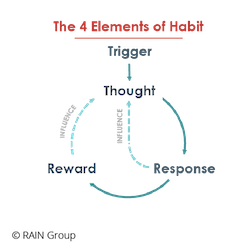Fitness centers are packed in January—everyone's motivated to lose those holiday pounds. Then, a month later, the place clears out.
What happened? Where did everyone go?
I can tell you: their motivation crashed and burned. There one month, gone the next.
Is it gone forever? Thankfully, no.
What happens, though, is that most people wait for motivation. They don't do what they can do, at any time, to bring it forth.
They don't do what they can do to manufacture their own motivation.
3 Ways to Manufacture Motivation
- Recruit Your Drive: Motivation is a skill more than an innate attribute. You can recruit your drive, building it like muscle.
- Ignite Your Proactivity: How you manage your calendar and your expectations of what you'll get done every week drives whether you accomplish it or procrastinate.
- Reengineer Your Habits: Understand habits and you can change them as you wish.
1. Recruit Your Drive
Let's say you've been told you're not driven. Or, even worse, you actually feel like you're not driven.
Create your own motivation. Your drive is in there somewhere. You can recruit it, mobilize it, round it up, bring it forth…if you know how.
How, you ask? (Keep reading.)
In our Extreme Productivity research, we studied 2,377 business professionals to learn what the most productive people do to manufacture motivation, control their time, and execute at the highest levels. Interestingly, we found that The Extremely Productive (The XP) are 2x more driven than The Rest.
I'm a very driven person. |
 |
First things first. Realize that drive is emotional. You can rationalize it in all sorts of ways. "I want to make more money. I need this promotion to get to the next step."
But why?
You want money for freedom. You want money to do what you want to do with your time. Promotions bring prestige. They bring hope of career advancement and fulfillment.
These are desires.
If you want your desires to come true, you need disciplined action to help you get there.
In the Dhammapada, Buddha compares his desires to an elephant and his discipline to a human trainer:
|
"The image that I came up with for myself, as I marveled at my weakness, was that I was a rider on the back of an elephant. I'm holding the reins in my hands, and by pulling one way or the other I can tell the elephant to turn, to stop, or to go." "I can direct things, but only when the elephant doesn't have desires of his own. When the elephant really wants to do something, I'm no match for him." |
I know people who want to get in shape, but they're not really committed. They diet and exercise for a day, then it's right back to a pound of penuche fudge and a 10-episode Simpsons binge.
When do they break the cycle? When they get serious about wanting the long-term reward of getting in shape more than the short-term pleasure of fudge and Netflix.
Sometimes getting what you want long-term happens effortlessly. Sometimes people win the lottery, too. Depending on divine providence to achieve goals is not a great strategy. The first step in a great one is increasing your emotional attachment to achieving the long-term vs. short-term reward.
In other words, you must inspire your elephant to want fitness more than fudge. Do so and working out and eating healthy become much easier.
Drive is in there. You can recruit it.
2. Ignite Your Proactivity
The second way to Manufacture Motivation is to Ignite Your Proactivity.
The Extremely Productive (XP) are 2.7x more proactive than The Rest. This is a key driver of productivity.
I am very proactive. |
 |
Two-thirds of The XP report they're very proactive, compared to one-quarter of The Rest.
Proactivity drives productivity and motivation. Procrastination kills it.
Yet, everyone—even the most productive people—procrastinates every once in a while.1
When there's something you know you need to do that seems difficult, it requires a lot of energy to get started. So you avoid it. If you avoid getting started on difficult things, it doesn't mean you aren't working.
You can fill your days with work. That's easy.
Sit back and react to email? No problem.
Show up to the meetings on your calendar? Check.
Turn off your email, put your phone in a drawer, and dive into your Greatest Impact Activity (GIA) that seems difficult to start? Not so easy.
The XP have it figured out:
- They start their day focused on their GIA.
- They put their GIA in their calendar.
- They stay focused on their GIA, and, even when pressed to do so, don't react to other people's agendas. (In fact, only 4% of the XP feel like they react to other people's agendas instead of driving their own.)
We've written about the definition of motivation before, and shared this definition from Business Dictionary:
|
mo·ti·va·tion /,mōdә΄vāSH(ә)n/ • noun Internal and external factors that stimulate desire and energy in people to be continually interested and committed to a job, role or subject, or to make an effort to attain a goal. |
Recruiting your drive is stimulating desire and energy. Do so and you'll be ready and willing to act.
Igniting your proactivity is making the effort, actually getting started on the actions that'll get you where you want to go.
Think of proactivity as a skill, not an attribute! It's not fixed. It's not an "I am" or "I'm not."
It's an "I can be if I can get organized about it."
3. Reengineer Your Habits
63% of The XP agree their work habits contribute significantly to their productivity. The Rest? Only 12%. Most people (86%) are in The Rest.
This is pretty bad. Or, let's say there's huge room for improvement. (There's some positive self-talk!)
My work habits contribute significantly to being extremely productive. |
 |
Too bad you can't teach an old dog new tricks, right?
Wrong!
You can change even the most embedded of habits if you know how.
Habit change has been a popular self-help topic over the last decade. Still, many pundits over-complicate habit change, or miss crucial elements that limit old dog-people from learning new dog-people-tricks.
Our research and field work have led us to strongly believe that the common habit loops you find out there a) aren't loops, and b) are incomplete.
There are 4 Elements of Habit:
- Trigger: Something happens that cues a sequence of doing something you tend to do. For example, your email alert dings while you're working.
- Thought: The cue triggers a thought, even if it's fast or subconscious. The thought might be, "I should check the new email."
- Response: Following the thought, you take an action. You toggle over to your email to read the new message.
- Reward: This is your gain or payoff. "Oh great! That report I'm waiting for is in. I'll stop what I'm doing and take a look."

Assuming you're conscious of the habit you want to change, you can intervene in several different places around the 4 Elements of Habit. You can change the trigger, change the thought, change your response, and define or increase or otherwise change what the reward is, as well as whether and how much you want it.
Yes, changing habits is difficult, but learning how to change them is pretty straightforward. The key is to identify the habits draining your motivation and employ new habits that boost it.
Your motivation isn't a fixed attribute. There are many things you can do today that can boost your motivation and drive. For more ideas and to dig deeper into the 3 habits shared here, download our report, 3 Daily Habits to Increase Sales Motivation.
1 And, in fact, 20% of people are chronic procrastinators.







